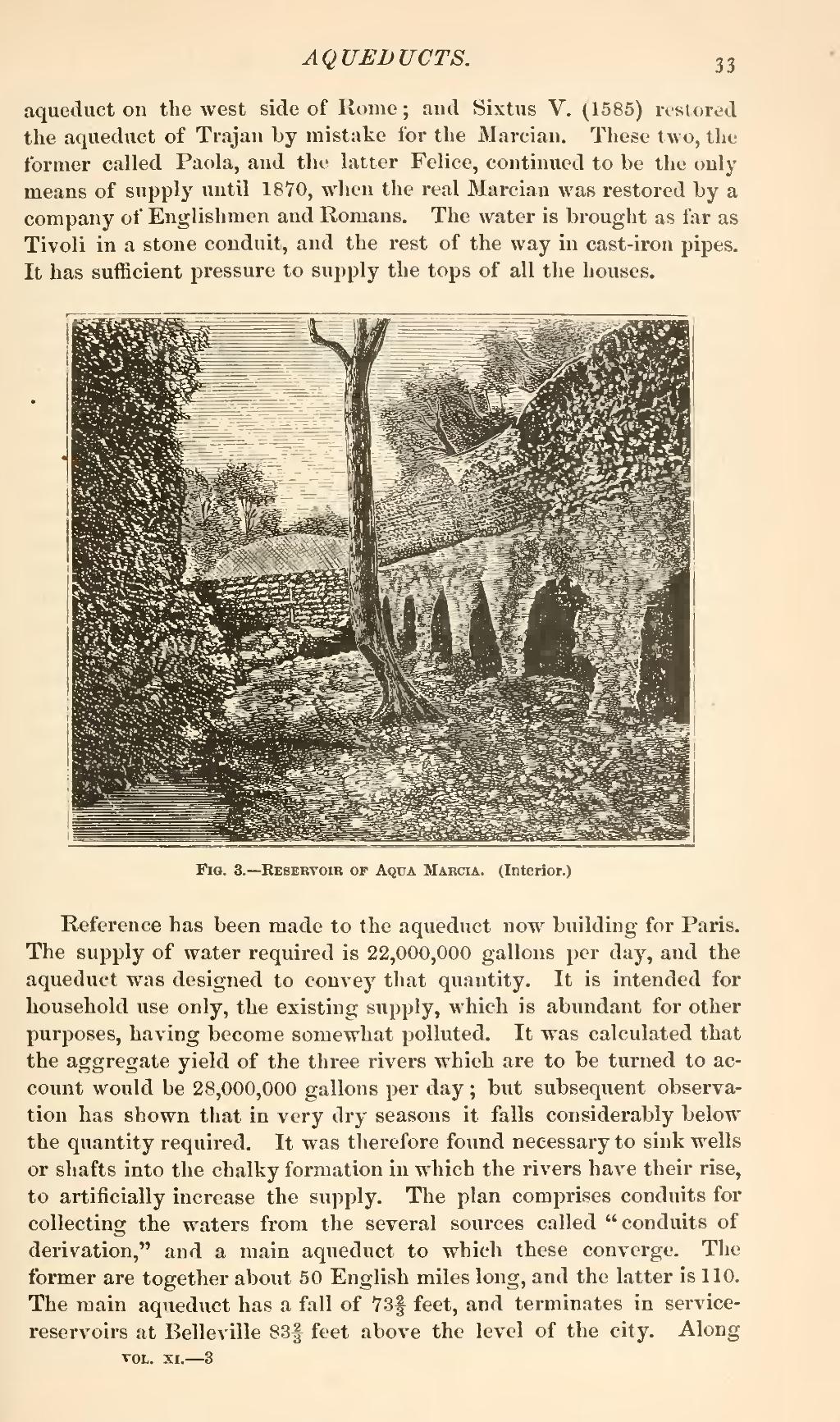aqueduct on the west side of Rome; and Sixtus V. (1585) restored the aqueduct of Trajan by mistake for the Marcian. These two, the former called Paola, and the latter Felice, continued to be the only means of supply until 1870, when the real Marcian was restored by a company of Englishmen and Romans. The water is brought as far as Tivoli in a stone conduit, and the rest of the way in cast-iron pipes. It has sufficient pressure to supply the tops of all the houses.

Fig. 3.—Reservoir of Aqua Marcia. (Interior.)
Reference has been made to the aqueduct now building for Paris. The supply of water required is 22,000,000 gallons per day, and the aqueduct was designed to convey that quantity. It is intended for household use only, the existing supply, which is abundant for other purposes, having become somewhat polluted. It was calculated that the aggregate yield of the three rivers which are to be turned to account would be 28,000,000 gallons per day; but subsequent observation has shown that in very dry seasons it falls considerably below the quantity required. It was therefore found necessary to sink wells or shafts into the chalky formation in which the rivers have their rise, to artificially increase the supply. The plan comprises conduits for collecting the waters from the several sources called "conduits of derivation," and a main aqueduct to which these converge. The former are together about 50 English miles long, and the latter is 110. The main aqueduct has a fall of 73-2/3 feet, and terminates in service-reservoirs at Belleville 83-2/3 feet above the level of the city. Along

